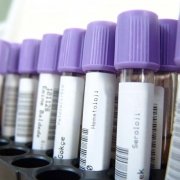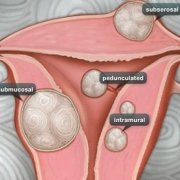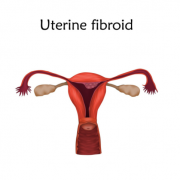Understanding Uterine Fibroids; Diagnosis, Treatment, and Options
Why do I have fibroids and what can I do about them?
What are uterine fibroids?
Uterine fibroids are benign noncancerous tumors affecting women. Fibroids, also called leiomyomas, are made of muscle cells forming into balls and bumps that grow in the uterus. Up to 80% of women will develop one or more uterine fibroids during their lifetime.¹
Many women are unaware they have fibroids, and sometimes doctors accidentally discover fibroids during a routine pelvic or pregnancy ultrasound.
Uterine fibroids behave in strange ways. They may grow slowly or quickly, or they may simply stay the same size throughout a woman’s life. Some will develop more fibroids while other women will not.
Why do we get uterine fibroids?
We do not know exactly why some women get fibroids, and others do not. Genetics and family history play a role. Having a family member with fibroids increases the risk. Fibroids are most common in African-American women affecting up to 50%.
Two female hormones, Estrogen and Progesterone, affect fibroids. Fibroids tend to shrink when the production of these hormones stops after menopause.

Photo by Jonathan Borba on Unsplash
What are the symptoms of uterine fibroids?
Not all women with fibroids have symptoms. The size and location in the uterus impact the potential for life-disrupting symptoms as fibroids increase blood flow to the uterus. Fibroids can also impact fertility and the risk of miscarriage. Most fibroids do not cause problems in pregnancy but do increase the risk of preterm labor and fetal growth concerns.
Size matters with fibroids. Large fibroids can lead to what we call bulk symptoms. These include:
- Painful intercourse
- Pressure or abdominal fullness
- Increased abdominal size
- Frequent urination
- Constipation
- Low back pain
The location of the fibroid inside of the uterus plays a role as well. Fibroids increase blood flow to the uterus. These symptoms include:
- Heavy periods (menorrhagia)
- Painful periods and cramping (dysmenorrhea)
- Bleeding after sex (postcoital bleeding)
Types of fibroids
- Intramural: These fibroids are located within the muscular walls of the uterus and typically can cause heavy bleeding, painful intercourse, or pressure symptoms.
- Submucosal These fibroids dangle inside of the uterine cavity typically cause heavy bleeding, irregular bleeding, or bleeding after intercourse.
- Subserosal This type of fibroid grows on the outer wall of the uterus. Heavy periods, pelvic pain and bulk or pressure symptoms are common
How are fibroid diagnosed?
- Pelvic exam: A healthcare provider can often diagnose uterine fibroid by feeling the size and shape of the uterus during a pelvic exam. Typically, a confirmation test will then be ordered
- Ultrasound: An ultrasound (sonogram) is a low-cost tool using sound waves to generate an image of the uterus to find, locate and measure the fibroids
- Magnetic resonance imaging: MRI is the most accurate imaging modality to identify the size, number, and location of uterine fibroids. An MRI can often help distinguish between benign fibroids and a rare malignant tumor called a leiomyosarcoma.
- Computerized tomography: CT scan is an alternative to MRI and ultrasound to the analysis of fibroids.
- Hysteroscopy: Hysteroscopy is a simple procedure where a doctor uses a small camera to evaluate the inside of the uterine cavity.
- Saline infused sonogram: Saline infused sonogram, also called a sonohysterogram, is a special type of ultrasound. A doctor fills the uterus with a small amount of fluid to separate the top of the uterus from the bottom. This technique allows better visualization of the inside of the uterus.

Photo by Alexander Solodukhin on Unsplash
How are fibroids treated?
- Hysterectomy: A hysterectomy is the removal of the uterus. Approximately 40 % of hysterectomies in the United States are performed because of fibroids.² While a hysterectomy is the most definitive treatment for fibroids, it also is the most invasive.
- Myomectomy: A Myomectomy is a surgery to remove individual fibroids while preserving the uterus. The size and location of the fibroids in the uterus determine the type of myomectomy. Options include an abdominal, laparoscopic, robotic, and hysteroscopic myomectomy. Myomectomies provide highly effective relief for fibroid symptoms. The original fibroids do not grow back, but new fibroid may develop.
- Uterine fibroid embolization: Uterine fibroid embolization is a highly effective option for women who wish to preserve their uterus and avoid surgery. An interventional radiologist performs this procedure through an IV without surgery. Occluding agents are placed into the blood vessel supplying each fibroid. This process starves the fibroid of blood, causing it to shrink.
- Radiofrequency fibroid ablation: The Acessa procedure is a minimally invasive, outpatient treatment for fibroids of all types and sizes and in all locations within the uterine wall. This laparoscopic surgery is performed through small incisions using a camera, an ultrasound probe, and the Acessa electrode tip. Heat is used to destroy fibroid tissue causing the fibroid to shrink over time.
- Endometrial ablation: Endometrial ablation is a short, outpatient surgical procedure to treat abnormal uterine bleeding without the need for incisions. The process destroys the endometrial lining, the tissue responsible for menstrual bleeding. This low-risk option has a 95% patient satisfaction rate and requires minimal patient downtime. Endometrial ablation does not treat or shrink fibroid but is an effective option to control the associated bleeding.
- MRI guided Focused ultrasound: This newer treatment treats fibroids through high-intensity ultrasound. Under MRI guidance, focused ultrasound waves pass through the skin to destroy the fibroids.
Medical treatments
- Gonadotropin-releasing hormone agonists: GnRH medications are often used preoperatively to temporarily reduce the size of fibroids before surgery. GnRH medications can help decrease blood loss, operative time, recovery time, and sometimes allow a minimally invasive type of hysterectomy.
- Progesterone IUD: Progesterone IUDs thin the endometrial longing. They do not directly treat uterine fibroids but effectively reduce menstrual bleeding.
- Oral contraceptives: OCPS reduce menstrual bleeding. They do not treat fibroids but are often used to reduce symptoms in women who seek temporary relief.
- Tranexamic acid: Antifibrinolytic therapy is an effective treatment to reduce the bleeding from uterine fibroids and menorrhagia. This treatment does not directly affect the size of uterine fibroids.
- Pain medication: Nonsteroidal anti-inflammatory drugs reduce pain and blood loss from fibroids.
- Selective progesterone receptor modulators: SPRMs such as Ulipristal acetate are newer medications that directly affect the Progesterone receptors. Progesterone is required for cellular proliferation and fibroid growth. This medication is currently FDA for endometriosis, but early clinical trials show promise in bleeding control and fibroid shrinkage.
Uterine fibroids are one of the most common gynecological conditions. Treatment is available for those suffering from this problem. Educating yourself is a key step to allow you and your doctor to make a decision together on the best approach for each individual case.
Thank you to BeingWell for publishing this article on Medium.
Blog Author: Dr. Jeff Livingston
Main Blog Photo By: Photo by Leighann Blackwood on Unsplash













